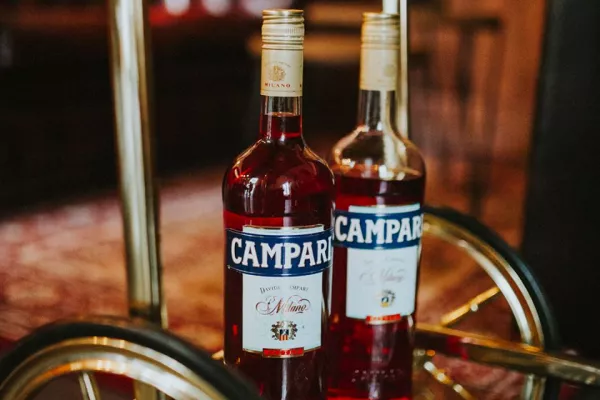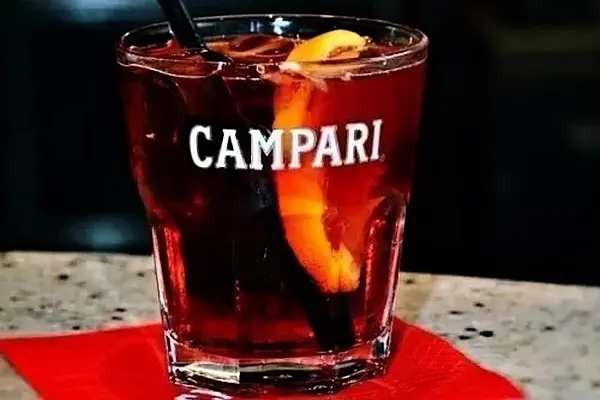Fernet-Branca may be just about the only thing on which your grandmother and your bartender agree.
The Italian amaro was invented in 1845 by Bernardino Branca and enjoyed popularity because of such cocktails as the Toronto, first mentioned in Robert Vermiere’s 1922 book Cocktails: How to Make Them, and the Hanky Panky, created by Ada Coleman of the American Bar at the Savoy in 1925.
The bitter spirit is made from a grab bag of herbs, spices, barks, and other mystery ingredients. While some are known—peppermint, chamomile, saffron, and myrrh among them—the list is kept secret by the Branca family. At one time, Fernet was used almost exclusively as a digestif.
Now, with bartenders across the world reviving old cocktails, Fernet-Branca is experiencing a renaissance. Seattle’s Canon serves a Toronto, while the Hanky Panky appears on the menu at Whislers in Austin. (You can find the recipes for these classics below.) Mixologists are also experimenting with new concoctions such as Eeyore's Requiem, whipped up by Toby Maloney of Chicago's Violet Hour and featuring a powerful combo of Fernet, Campari, and Cynar. There’s also the Mayhem, a mix of rye, brandy, Fernet, and Peychaud’s, which is available at Dr. Teeth and the Electric Mayhem in San Francisco, the city that serves as the unofficial hub of Fernet-Branca in the U.S. In certain places in the Bay Area, you can even find Fernet on tap.
According to Wayne Curtis, writing for the Atlantic, at least 25 percent of the Fernet-Branca drinking in the U.S. happens in San Francisco, but its rise in popularity is almost as shrouded in mystery as the full list of ingredients.
"My recollection is that bartenders in San Francisco have always done shots of Fernet. We thought it contained some ancient voodoo to ward off hangovers or keep yourself fit for purpose with another round (or four) of drinks," said Max Messier, San Francisco native, former bartender, and bar manager in the city and currently chief executive officer of Cocktail and Sons, a cocktail syrups company.
What Does Fernet Taste Like?
The fact that it has a long local history of being drunk straight is saying something, considering that the spirit isn’t, at first taste, what you might call “tasty.” "Bracing" is probably a fairer description. Or "sharp."
Originally bitter on the palate—almost acrid—Fernet slowly turns sweet in the mouth. A hint of what could be mint (but is actually saffron) spreads across the tongue, and gradually you’re ready for more. If you’re familiar with the German digestif Jägermeister, with its licorice-forward palate, this will seem similar. It’s less syrupy, though: Fernet-Branca has among the lowest sugar contents of any amaro, according to Geoff Kleinman of DrinkSpirits.
At a celebration for 171 years of Fernet at this year’s Tales of the Cocktail trade show in New Orleans, it was easy to see which bartenders were believers in the digestif and which hadn’t quite been converted. As shots were passed around, you could see it on their faces. Veterans of the Fernet lifestyle downed them with ease. The rookies, however, put on their best “Fernet faces,” contorting their cheeks around the bittersweet shot.
Why Now?
There are two reasons for the current Fernet moment: The first is marketing by the Branca family, which has gone to great lengths to educate the market on uses of the liqueur and its history.
“The Branca Family has kept a good thing going and has gotten some great loyalty from the craft cocktail scene for a bit now. Their marketing and education has been awesome,” said Zach Lynch, bar manager of St. Augustine’s Ice Plant, the largest Fernet account in Florida.
A second reason why Fernet endured originally—and why it's “back,” according to sixth-generation heir Edoardo Branca—is consistency.
“In 10 years, there may be a little more gray on our faces and in our hair—and maybe we’ll be speaking about a new cocktail—but we’re still going to have the same values that we have now,” Branca said. This consistency, he said, has helped them stay in the mind’s eye of consumers and bartenders alike: Fernet continued to be marketed before other, obscure amaro competitors came back into the sun during the blossoming of global cocktail culture.
“We didn't have a lot of other options back in the mid-2000’s, and it was like a right of passage to drink Fernet with a Ginger Ale back,” said Max Messier of Cocktail and Sons. “All these new bartenders have Cynar and Averna and Zucca to enjoy, but we didn't even know jack about other amari 10 years ago.”
Good for You?
Originally, many amari were purported to have medicinal properties. In fact, this was one reason Fernet was able to make it through Prohibition as other spirits fell by the wayside. It was sold legally in some San Francisco pharmacies. Text on early versions of the Fernet-Branca bottle read:
“[Fernet] benefits the stomach, promotes digestion, strengthens the body, overcomes cholera, reduces fever, and heals those suffering from nervous weakness, lack of appetite, sickness or tapeworms; suitable for use as a preventative measure for all those who are obliged to reside in damp and infectious conditions.”
While not the forerunner of reasons to consume Fernet, health may, to some, still play a role in consuming it because it has less sugar than other amari—or because legend says it will help cure a hangover.
“What we’ve seen in the past 10 years is a move toward being more health-conscious, and people now don’t want a drink that is 90 percent sugar, so this is where Fernet-Branca delivers,” Branca said.
Beyond San Francisco
Fernet isn’t just an American or European thing, either. For years, Argentinians have been drinking Fernet con Coca, utilizing the bitter flavors to balance out the sweetness of Coca Cola. The drink is widely available in the country and has become a standard in cafés and bars.
“It just one of those things, like a Wisconsin Old Fashioned made with Korbel Brandy, or the legendary Midwestern "Red Beer" made with Bloody Mary mix and an amber ale. And let's not forget that when you live in a hot, humid climate, nothing goes down better than a simple mixer and a strong base spirit,” Messier said.
The proof of its popularity in Argentina, beyond people’s opinions on the matter, is easy to see: Not only was a popular song penned for the drink (Fernet con Coca, by Vilma Palma and the Vampires, which contains the line: “I do not want to end up in a cell without my Fernet and Cola”), but Argentina is the only location outside Italy that has a Fernet production facility.
And while other amari or other bitter liqueurs will pop up around the U.S., Fernet seems to be here for the long run, thanks, in part, to San Francisco. No matter what localized traditions there may be—Malort in Chicago or Chartreuse in New Orleans, for example—Fernet will always be on the tips of many bartenders' tongues nationwide.
“We will expand our palettes with other amari and enjoy the ever-expanding importation of amazing spirits from across the globe, but remember: This is how we've drunk, and this how we will always drink in San Francisco,” Messier said.
News by Bloomberg, edited by Hospitality Ireland









